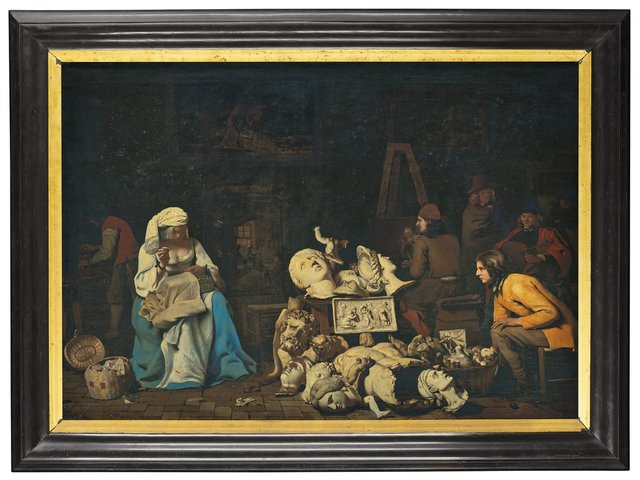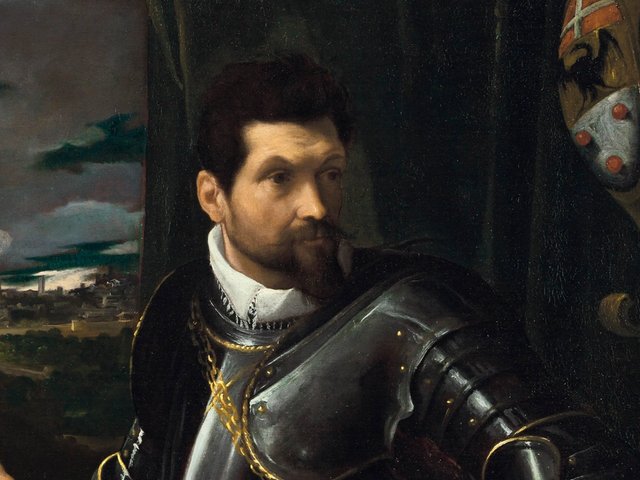Christie’s has a bumper crop of old masters at its London sale on 8 December, including Rembrandt’s Portrait of a Man, 1658, which could become the second most expensive old master at auction. The estimate is £18m-£25m: so far the two record holders are Rubens’s Massacre of the Innocents, around 1611, (£49.5m in 2003) and Pontormo’s Portrait of a Man with a Halberdier, 1528-30 (£22.3m in 1989).
Although the Rembrandt portrait had been questioned by specialist Christian Tümpel (who described it as a workshop production in his 1993 monograph), after extensive scientific analysis it is now fully accepted by Rembrandt Research Project chairman Ernst van der Wetering.
The vendor is not being named, but she is Barbara Piasecka Johnson, the American collector who now lives in Italy. She and her husband Seward acquired the Rembrandt in 1974. On 8 July 2009 she sold a group of Renaissance and Baroque works at Sotheby’s in London, which raised nearly £10m.
It will be interesting to see if the sale of the 1658 portrait has any impact on the future of Rembrandt’s 1657 Portrait of Catrina Hooghsaet, from Penryhn Castle in Wales. In 2007 the Penrhyn picture was offered to the Rijksmuseum, which has no Rembrandts of the 1650s and wanted to acquire it. However, the Amsterdam museum was unable to meet the price, believed to be around £40m. It was then returned to Penrhyn.
Last month Christie’s announced another coup, the sale of Raphael’s drawing of Head of a Muse, which dates from around 1510 and served as a study for the figure of Parnassus in a Vatican fresco. The estimate is £12m-£16m, and the upper figure is nearly double the record price for an old master drawing at auction (£8.1m for both Michelangelo’s The Risen Christ in 2000 and Leonardo’s Horse and Rider the following year). The undisclosed owners of the Raphael are the descendants of the late Norman Colville, who acquired it in the 1930s. The Raphael comes to auction after the Fitzwilliam Museum failed to raise the money for a private treaty sale.
Christie’s final coup is Domenichino’s St John the Evangelist (1620s), which is estimated at £7m-£10m. Although not identified, the seller is the family trust of Sir George Christie of Glyndebourne. His family has owned the painting since 1899. The Domenichino was on loan to the National Gallery from 1992-1994.
Sotheby’s main offering on 9 December is Van Dyck’s Self Portrait of 1641, estimated at £2m-£3m. Tate curator Karen Hearn has said that it may be partly unfinished. It could still make a record price for a Van Dyck at auction (Rearing Stallion, 1599-1641, fetched £3,065,250 last year).
The unidentified owner is the Earl of Jersey, whose family has owned it since 1712 (earlier owners may have included the painter Peter Lely). The Earl also owns a companion self-portrait of William Dobson. Both are still in matching carved frames of the 17th century, and were shown together at the “Van Dyck & Britain” exhibition which closed at Tate Britain in May. The Dobson is not being sold at the December auction, and there is considerable sorrow that the two self-portraits are being split up after over 370 years.
The Raphael, Domenichino and Van Dyck would all require UK export licences, and their importance means that they would almost certainly be deferred to allow a UK buyer to match the price. The Raphael and Domenichino would presumably be too expensive for a public collection to consider, but Tate might possibly try to raise the funds for the Van Dyck.



